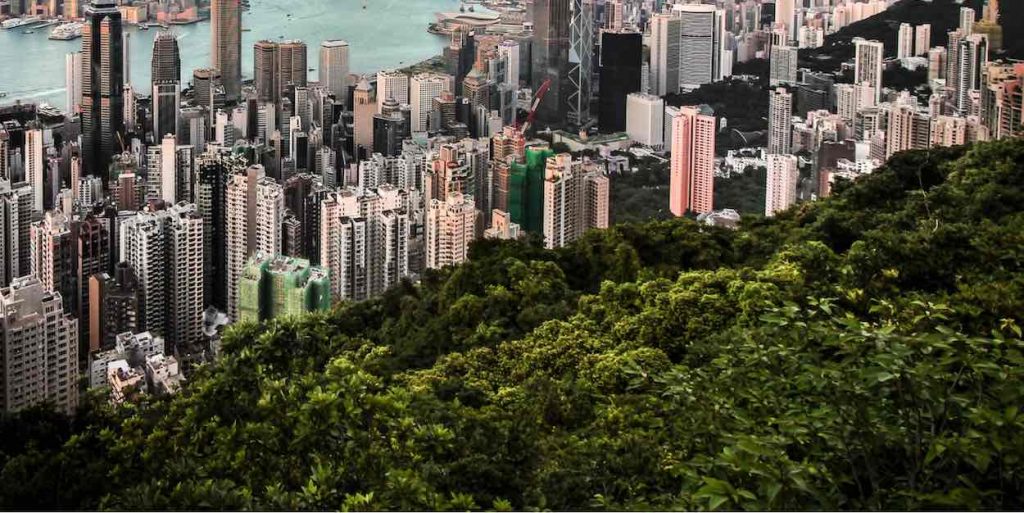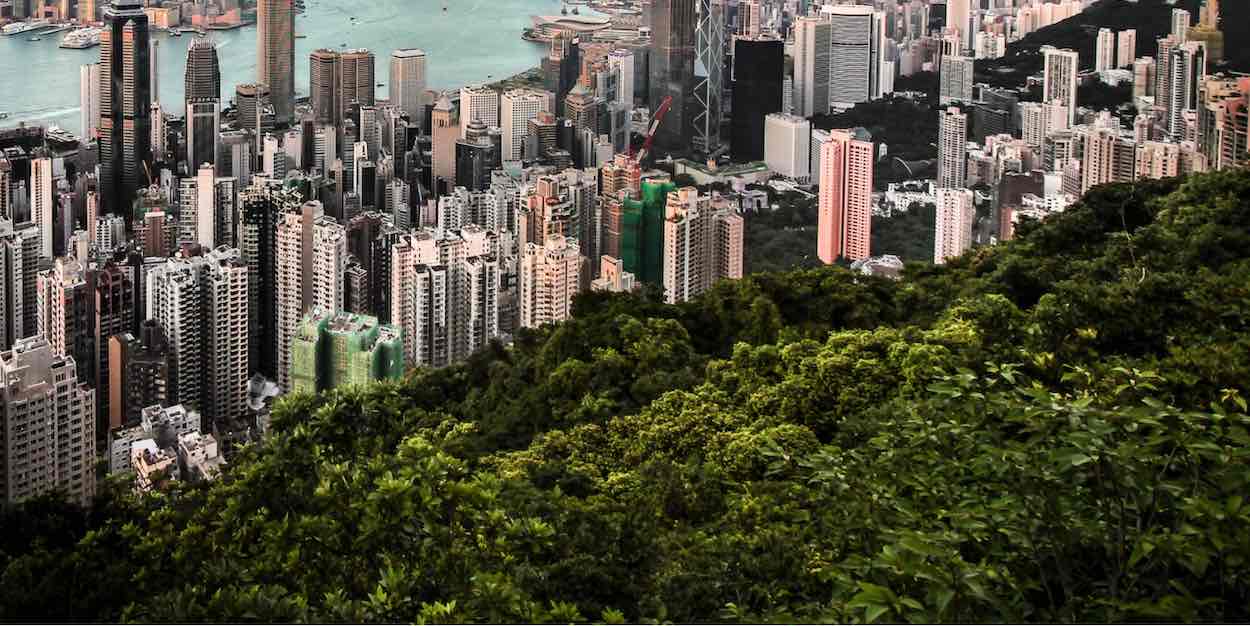(Original article by Jessica Colarossi, edited for length)

Boston researchers have found that trees and soils on the outermost edges of forests and city parks may play a greater role in fighting climate change than previously imagined.
They may not have lungs like we do, but the soil and trees are breathing in and out all of the time. Trees take in carbon dioxide (CO2) and also store carbon in their trunks.
Forests actually store more carbon dioxide than they release, which is an incredible service to our planet: about 30 percent of fossil fuel emissions are eliminated when forests absorb them, an effect called the terrestrial carbon sink.
“We’re not feeling the full effects of climate change because of the terrestrial climate sink,” says Boston University biogeochemist and ecologist Lucy Hutyra.
But, what happens to the planet’s “lungs” when large forests are cut down into smaller patches, a process researchers call forest fragmentation.
“We think about forests as big landscapes, but really they are chopped up into all these little segments because of the human world,” says Hutyra, a BU College of Arts & Sciences professor of earth and environment. These alterations to forests create more areas called forest edges—literally, the trees at the outermost edge of a forest.
RELATED: Hedgerows Are 2,000 Times More Valuable For Ecosystems Than We Could Imagine
It has long been assumed that these forest edges release and store carbon at similar rates as forest interiors, but Hutyra and researchers in her lab at BU have discovered this isn’t true. In two recent research papers, Hutyra’s team found edge trees grow faster than their country cousins deep in the forest, and that soil in urban areas can hoard more carbon dioxide than previously thought. Their results challenge current ideas about conservation and the value of urban forests as more than places for recreation.
Breathing in CO2
In one of the most detailed looks at temperate forest edges to date, Hutyra and her research team, including collaborators at the Harvard Forest, examined the growth rates of edge trees compared to the rest of the forest.
Using data from the US Department of Agriculture’s Forest Inventory and Analysis program—which monitors tree size, growth, and land use across the country—Hutyra’s team looked at more than 48,000 forest plots in the Northeast United States. They found trees on the edges grow nearly twice as fast as interior trees—those roughly 100 feet away from the edge.
LOOK: Refugees in Cameroon Have Turned a Treeless Desert Camp Into a Thriving Forest
“This is likely because the trees on the edge don’t have competition with interior forest, so they get more light,” says Luca Morreale, a PhD candidate in Hutyra’s lab and lead author of the paper, published in Nature Communications. And the more a tree grows, the more carbon it is taking in.
This is good news, considering over 25 percent of the landscape in the Northeast United States is covered by an edge. But this doesn’t mean that more forest fragmentation is a solution for sucking more carbon out of the atmosphere; carbon storage along the edges of fragmented areas does not come close to offsetting the negative side effects of losing forests—like releasing carbon long stored underground back into the atmosphere.
According to Morreale and Hutyra, their study instead points to the need to better understand and conserve existing forest edges, which are typically seen as more disposable. “We are underestimating how much carbon is being taken up by temperate forest edges,” Hutyra says in Boston University’s news page, The Brink.
Breathing out CO2
CHECK Out: Mature Trees Will Increase CO2 Absorption By a Third – As Levels Raise on Earth
In a second related study, Hutyra teamed up with BU biologist Pamela Templer to study soils at the forest edge. Garvey found that not only does forest edge soil release more carbon than interior forest soil, but that the soil is acting dramatically differently in rural and urban forests.
“Soils contain wild amounts of bacteria, fungi, roots, and microorganisms, and just the way we breathe out CO2 when working and being active, they respire CO2, as well,” says Sarah Garvey, a PhD candidate in Hutyra’s lab and lead author of a paper on forest edge soils published in Global Change Biology. “With soil, there is more there than meets the eye.”
Visiting eight field sites every two weeks for a year and a half to measure the levels of carbon being released from the soils. They saw that in rural areas (with fewer people and buildings), warmer temperatures at the edge of the forest caused leaves and organic matter to decompose faster, forcing the soil microorganisms to work harder and release more carbon dioxide than their cooler, more shaded peers in the forest interior.
In urban forests, where the ground was significantly hotter and drier, those soils stopped releasing as much carbon. But the research, funded by the National Science Foundation and the U.S. Department of Agriculture, also shows that urban soils, like those in Franklin Park, the largest public park in Boston, could have a greater capacity to store carbon than previously expected, says Garvey.
POPULAR: Madrid is Planting a Huge Forest Ring Around the City to Lower Heat Levels and Cut CO2 Emissions
Critical for our future
“Forests store almost half of their carbon below ground,” Garvey says. “Which is why understanding the relationships between the soil and the plant life is so vital to understanding the bigger picture of how forests store carbon for the long term.”
Cities and countries across the world are making commitments to plant more trees in an effort to curb the impacts of climate change. Factoring in the elevated amounts of carbon stored by forest edges should be taken into account.
Further research should help clarify whether preserving a place like Franklin Park, where there’s tons of foot traffic, is just as valuable to save as a remote forest where no one visits.
SHARE the Fascinating News With Tree People on Social Media…




















